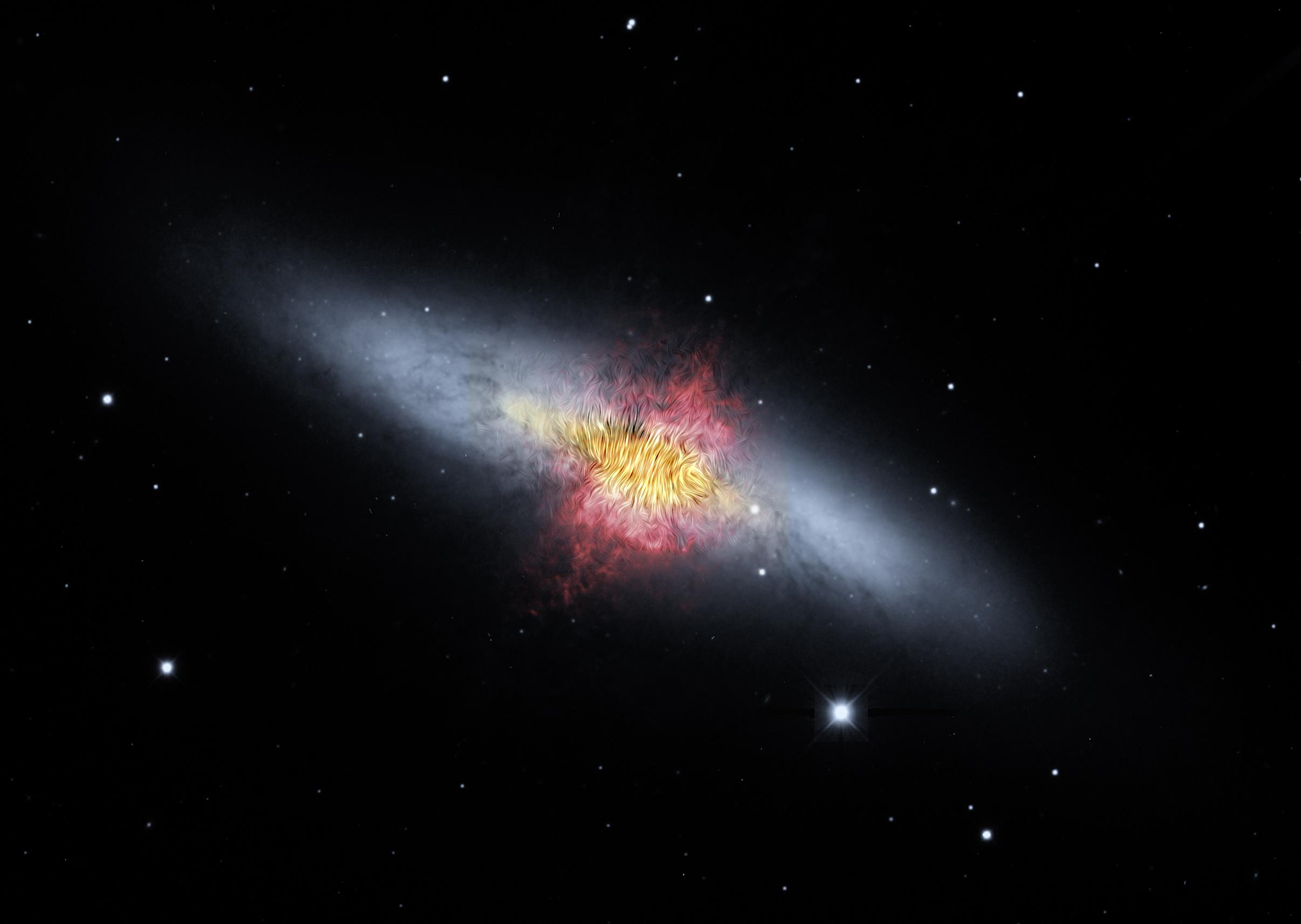Tracing the Cigar Galaxy’s Superwind
Monica Young, Sky & Telescope | March 8, 2019
NASA’s SOFIA airborne observatory returns a striking far-infrared view of the Cigar Galaxy and its “galactic superwind.”
A composite image of the Cigar Galaxy (M82) shows the magnetic field detected by the HAWC+ instrument onboard SOFIA. Displayed as streamlines, the magnetic field appears to follow the bipolar outflows (red) generated by the intense starbirth in the center of the galaxy. The image combines visible starlight (gray) and a tracing of hydrogen gas (red) observed from the Kitt Peak Observatory, with near-infrared and mid-infrared starlight and dust (yellow) observed by SOFIA and the Spitzer Space Telescope.
NASA / SOFIA / E. Lopez-Rodiguez; NASA / Spitzer / J. Moustakas et al. |
The Cigar Galaxy is the archetypal starburst galaxy, having experienced two recent spates of star formation. One occurred10 million years ago in its nucleus, and another sprang up 5 million years ago in a ring around the galaxy’s core. This froth of starbirth drives a so-called galactic superwind: dust, gas, and radiation that flow out of the galaxy and into intergalactic space.
To observe this wind, Terry Jay Jones (University of Minnesota) and colleagues applied for time on NASA’s SOFIA airborne observatory, which soars above much of the atmosphere that would absorb the infrared light it’s designed to collect. A modified Boeing 747 flies the 2.7-meter telescope in whatever careening trajectories are necessary to best view its targets that night.
Jones and colleagues used the High-resolution Airborne Wideband Camera-plus (HAWC+) instrument aboard SOFIA to observe far-infrared light (at wavelengths of 53 and 154 microns) coming from the Cigar Galaxy. Hot dust within giant, gaseous star-factory clouds emits this light. But dust isn’t perfectly spherical; dust grains tend to be oblong, and they tend to align with the ambient magnetic field that threads the galaxy. So the emission from these dust grains is polarized in a way that tells astronomers which way the magnetic field is pointing.
What Jones’s team found was that within 2,000 light-years of the galaxy’s center, the wind that charges into intergalactic space carries the galaxy’s magnetic field along with it. The polarization in the image above shows that the magnetic field is pretty much vertical in this central region. Outside this region, the magnetic field is horizontal, threading the plane of the galaxy.
None of this is a surprise — the observations fall in line with what Jones’s team expected to see. At the same time, the observations provide a valuable clue, as astronomers don’t understand exactly how galaxies blow out such winds. All starburst galaxies seem to have superwinds like the one coming from the Cigar, so the intense star formation must be involved but the mechanism remains unclear. These observations — in addition to providing a striking view of the Cigar Galaxy not available through your standard backyard telescope — will help astronomers puzzle apart wind-driving mechanisms.













 Reply With Quote
Reply With Quote